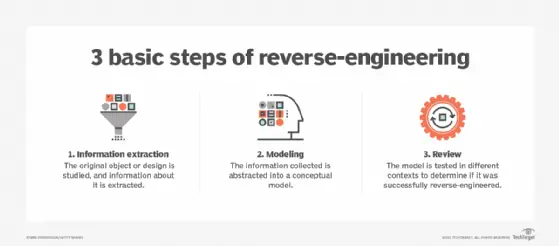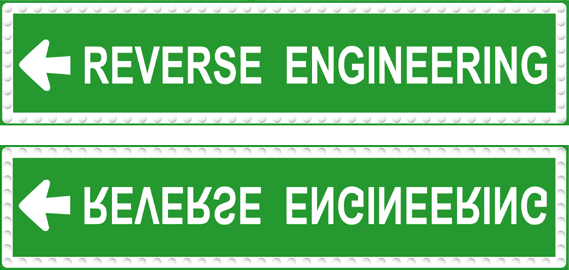Reverse Engineering As A Learning Tool In Engineering Education

Executive Summary:

In this article, we will explore reverse engineering as a powerful learning tool in engineering education. By dissecting and analyzing existing products, students gain valuable insights into design concepts, problem-solving techniques, and manufacturing processes. This hands-on approach fosters critical thinking, creativity ,and innovation, while equipping students with practical skills that are highly sought after in the engineering industry.

Introduction:
Reverse engineering has become an integral part of the engineering design process, where engineers study and analyze existing products to understand their functionality, design , and manufacturing techniques. This process offers a unique opportunity for engineers to learn from the successes and failures of others, gaining valuable insights that can be applied to their own designs. In engineering education, reverse engineering serves as a powerful learning tool that provides students with hands-on experience and a deeper understanding of engineering principles.
Reverse Engineering As a Learning Tool:
1. Understanding Design Concepts:
Reverse engineering allows students to deconstruct products and examine their components, materials, and assembly methods. By analyzing the design choices, students learn about the relationship between form and function, as well as the trade-offs involved in engineering design.
- Analyzing product components and their interactions helps students understand the interdependence of design elements.
- Identifying design constraints, such as material properties and manufacturing processes, reinforces the importance of considering practical limitations.
- Comparing different designs for the same function illustrates design principles and inspires innovative solutions.
2. Mastering Problem-Solving Techniques:
Through reverse engineering, students develop their problem-solving skills by analyzing how a product addresses a particular problem. They identify the limitations of the design and explore alternative solutions.
- Diagnosing problems and malfunctions enhances students’ troubleshooting skills.
- Exploring different problem-solving approaches promotes critical thinking and out-of-the-box thinking.
- Evaluating design trade-offs helps students appreciate the multifaceted nature of engineering problems.
3. Developing Hands-On Skills:
Reverse engineering involves hands-on activities such as disassembling products, measuring components, and analyzing materials. These activities provide students with practical experience and a deeper appreciation for the manufacturing process.
- Dismantling products allows students to understand assembly sequences and assembly techniques.
- Measuring components and analyzing tolerances highlights the precision required in engineering.
- Testing materials and analyzing their properties reinforces the link between materials science and engineering design.
4. Enhancing Creativity and Innovation:
Reverse engineering challenges students to think creatively and come up with innovative solutions to problems. They are encouraged to question the status quo and explore new possibilities.
- Encouraging modifications and improvements fosters creativity and the ability to think beyond existing designs.
- Identifying potential upgrades or new applications for products stimulates innovation.
- Exploring alternative materials and manufacturing methods promotes experimentation and the exploration of unconventional ideas.
5. Building a Foundation for Advanced Studies:
Reverse engineering provides a solid foundation for advanced engineering courses and research. By understanding the inner workings of products, students gain a deeper appreciation for the complexity and interconnectedness of engineering systems.
- Reverse engineering projects help students appreciate the importance of interdisciplinary collaboration.
- Interpreting technical documentation and data sheets develops research and analytical skills.
- Understanding the limitations of a product highlights areas for further research and development.
Conclusion:
Reverse engineering is a highly effective learning tool in engineering education. By analyzing existing products, students gain valuable insights into design concepts, problem-solving techniques, manufacturing processes, and the relationship between form and function. This hands-on approach cultivates critical thinking, creativity, and innovation, while providing students with practical skills that are highly sought after in the engineering industry. Reverse engineering equips students with the knowledge and skills necessary to thrive in the ever-changing world of engineering.
Keyword Phrase Tags:
- reverse engineering in engineering education
- learning from existing products
- hands-on engineering experience
- design concepts and problem-solving skills
- fostering creativity and innovation

######:thumbs_up::rocket::stars:This post is well written and is very informative about the use of reverse engineering in education. Reverse engineering is a process by which a system or device is analyzed to create a new design or product. This process can be used to learn about how a system works and to identify areas for improvement######
######Utter codswallop! Reverse engineering is nothing more than a cheap way to steal other people’s work. It stifles innovation and creativity######
######Reverse engineering is a powerful tool that can be used to improve the design and performance of existing products. It is also a valuable learning tool that can students gain a deeper understanding of how things work######
######I think the author is making a false dichotomy here. Reverse engineering is not necessarily about stealing other people’s work. It can also be used to learn from and improve upon existing designs######
######Reverse engineering is like doing an autopsy on a new toy######
######Reverse engineering is about learning, but it’s also about legal liability. If you don’t have permission from the copyright holder, you could be sued for copyright infringement######
######Reverse engineering is totally legit if you do it right. Just make sure you don’t break any laws######
######Reverse engineering is a valuable skill for any engineer. It can help you to understand how things work and to find ways to improve upon them######
######Reverse engineering is a great way to learn about the inner workings of a system or device and hopefully improve on it.######
######Why bother with reverse engineering when you can just buy a new one cheaper######
######Reverse engineering is a powerful tool that can be used for good or evil. It’s important to use it responsibly######
######Reverse engineering is a fun and challenging way to learn about how things work. I highly recommend it to anyone who is interested in engineering######
######I’m not sure I agree with the author’s conclusion that reverse engineering is always a good thing. It can also be used to create counterfeit products or to steal trade secrets######